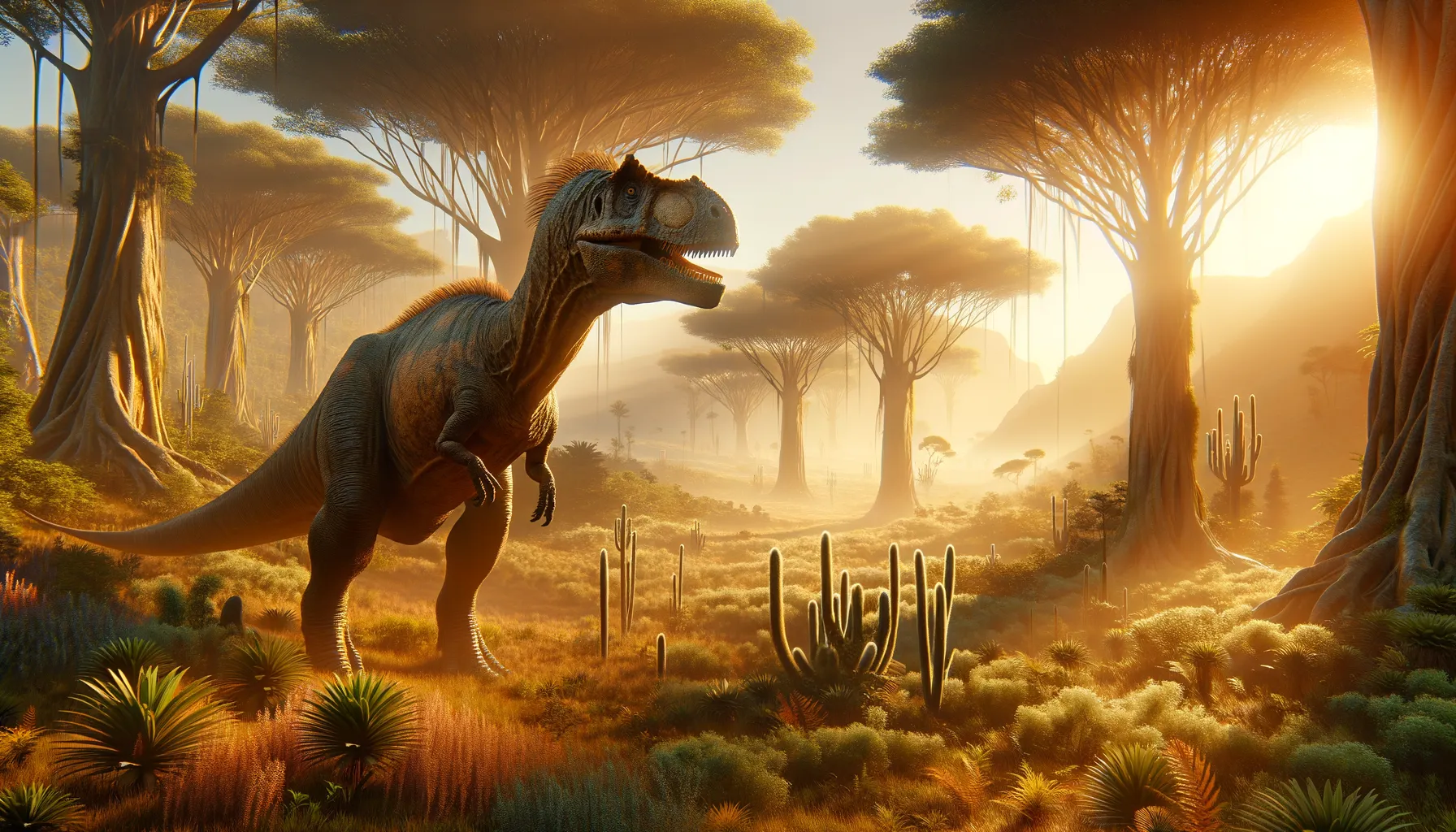
Aetonyx
A graceful herbivore from ancient times.
Period
Jurassic
Length
Roughly 6 to 7 meters in length.
Height
Approximately 1.5 to 2 meters at the hip.
Weight
Around 300 to 450 kilograms.
Aetonyx was an early sauropodomorph dinosaur from the Jurassic period, primarily found in what is now South Africa. It was a plant-eating dinosaur that walked on two legs but might have occasionally used all four. Its anatomy suggests it was moderately agile for its size, and its herbivorous diet required vegetation available in its environment. Aetonyx contributed to our understanding of early dinosaur evolution and the transition from small bipedal to larger quadrupedal sauropods.
Diet
Aetonyx was herbivorous, primarily consuming a variety of prehistoric plants. It likely fed on ferns, cycads, and other vegetation available during the Jurassic period.
Hunting
As a herbivore, Aetonyx did not hunt for food. Instead, it foraged through its environment, using its long neck to reach vegetation.
Environmental challenges
Aetonyx faced challenges such as varying climate conditions and the need to find enough vegetation to sustain its large body. Competition with other herbivorous dinosaurs for resources was likely a common challenge. Environmental changes over time could affect the availability of its preferred plant sources.
Speed
Moderate walking speed.
Lifespan
Estimated to be 20-30 years.
First discovery
Discovered in the early 20th century in South Africa.
Fun Facts
- Aetonyx was a dinosaur that lived during the Late Triassic period, about 210 million years ago.
- This dinosaur is thought to have been a plant-eater, using its strong limbs to pluck vegetation.
- Aetonyx is considered an early relative of the more famous long-necked sauropods.
- The name 'Aetonyx' means 'eagle claw', referring to the shape of its claws.
- Fossils of Aetonyx were first discovered in South Africa, providing insights into early dinosaur evolution.
- Unlike many other dinosaurs, Aetonyx might have been semi-quadrupedal, walking on both two and four legs.
- Despite its impressive-sounding name, Aetonyx was relatively small compared to later giants, about the size of a large dog.
Growth and Development
Aetonyx hatched from eggs and began life as a small juvenile. As it grew, it developed strong legs and a long neck, adaptations necessary for its herbivorous lifestyle. The growth rate might have varied depending on environmental conditions and food availability.
Habitat
Aetonyx resided in what is now South Africa, thriving in diverse environments that included forested areas and open plains. Its habitat provided a rich variety of plant life, supporting its herbivorous diet. Seasonal changes may have influenced its migratory patterns within its habitat.
Interaction with other species
Aetonyx likely interacted with other herbivorous dinosaurs, potentially forming mixed-species groups for better protection against predators. It coexisted with early theropods, which may have posed a threat. Indirect interactions included competing for food sources with other plant-eaters.
Natural lifespan
Its natural lifespan was likely about 20-30 years.
Reproduction
Aetonyx, like many dinosaurs, laid eggs. Nests were possibly built in safe, concealed areas to protect the eggs from predators. Parental care details remain speculative, though some dinosaurs showed signs of nurturing young.
Social behaviour
Aetonyx might have traveled in small herds for protection and social interaction. Herding behavior could help in deterring predators and optimally exploiting food resources. Its social structure remains a topic of study among paleontologists.
Fossil locations
Fossils of Aetonyx have been primarily found in South Africa, providing valuable insights into its anatomy and lifestyle. The region's sedimentary layers have preserved numerous specimens, allowing for detailed study. These discoveries have contributed significantly to understanding early sauropodomorph evolution.
